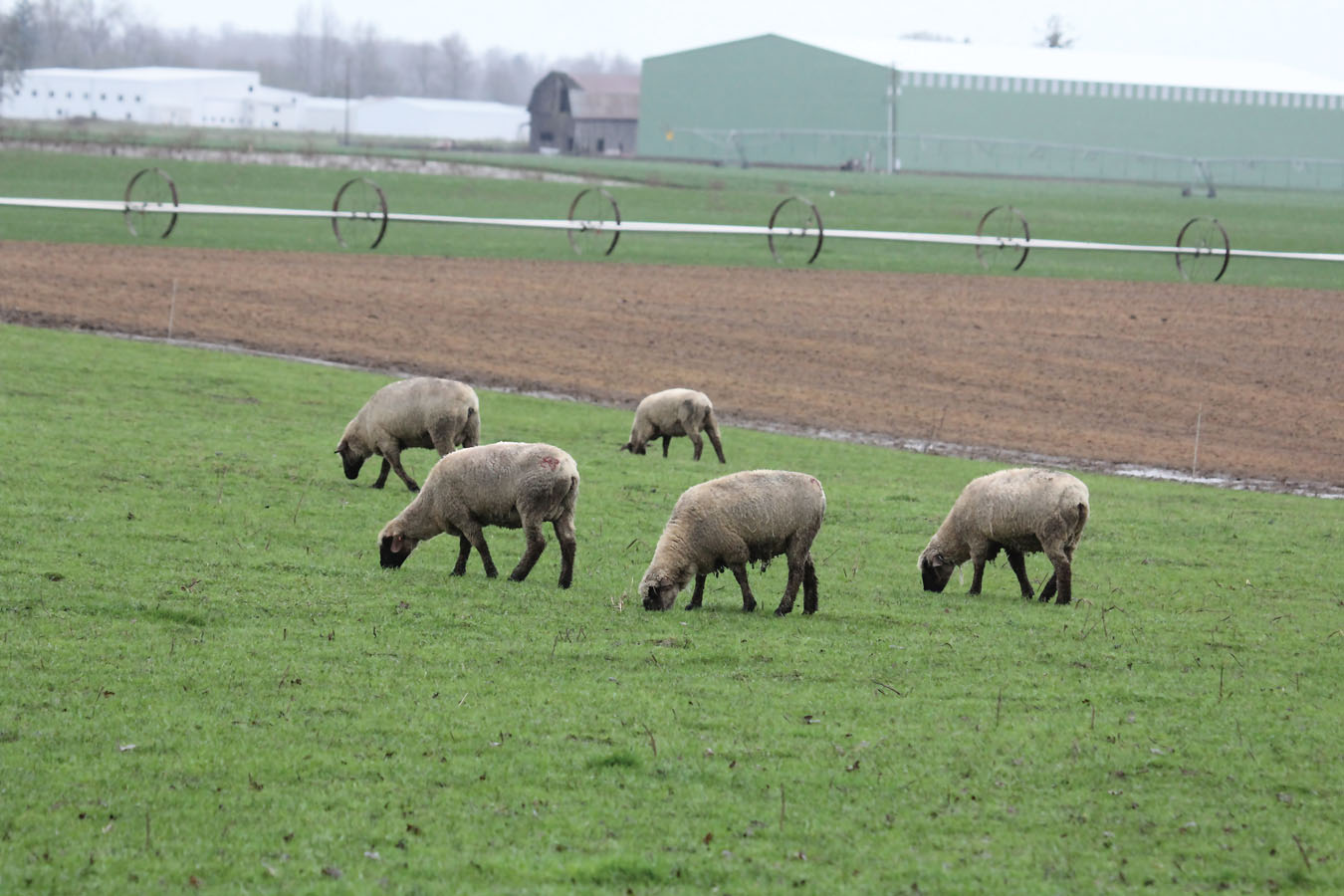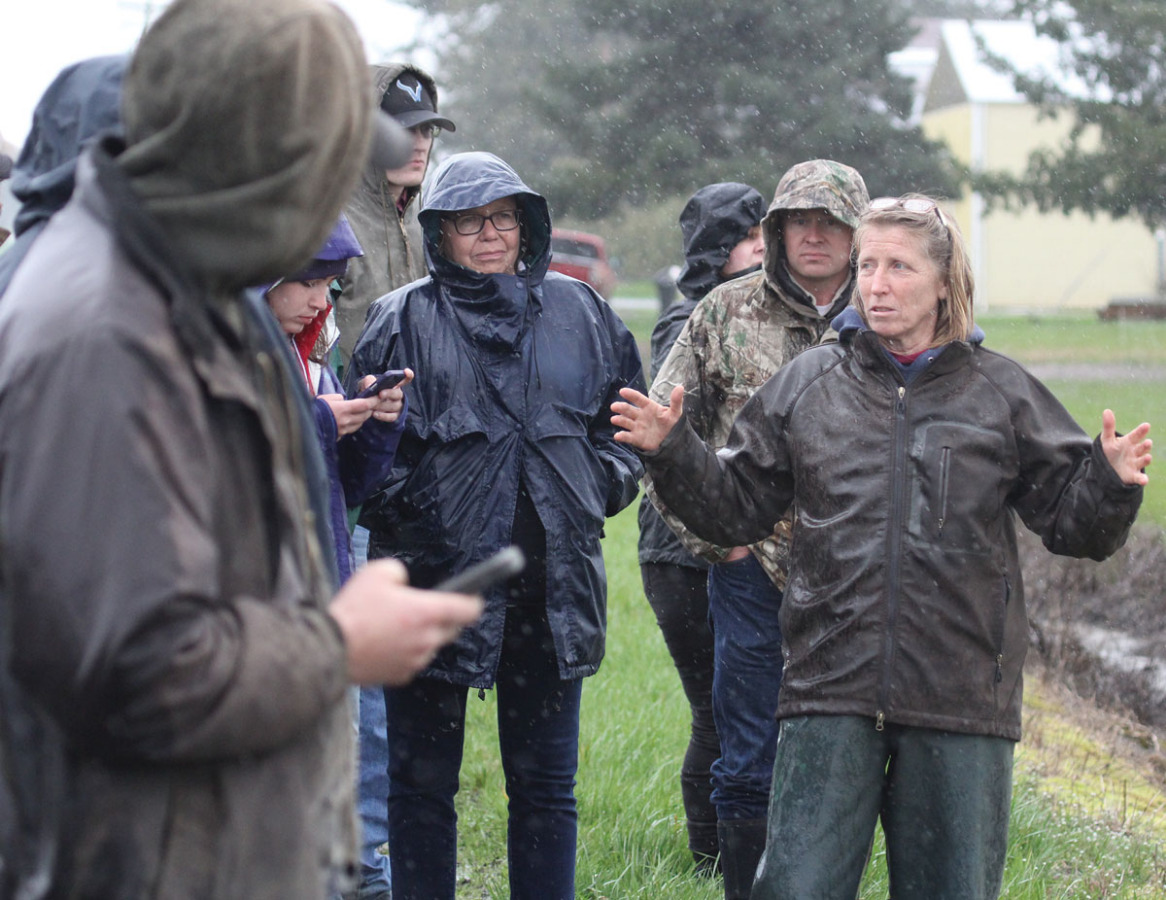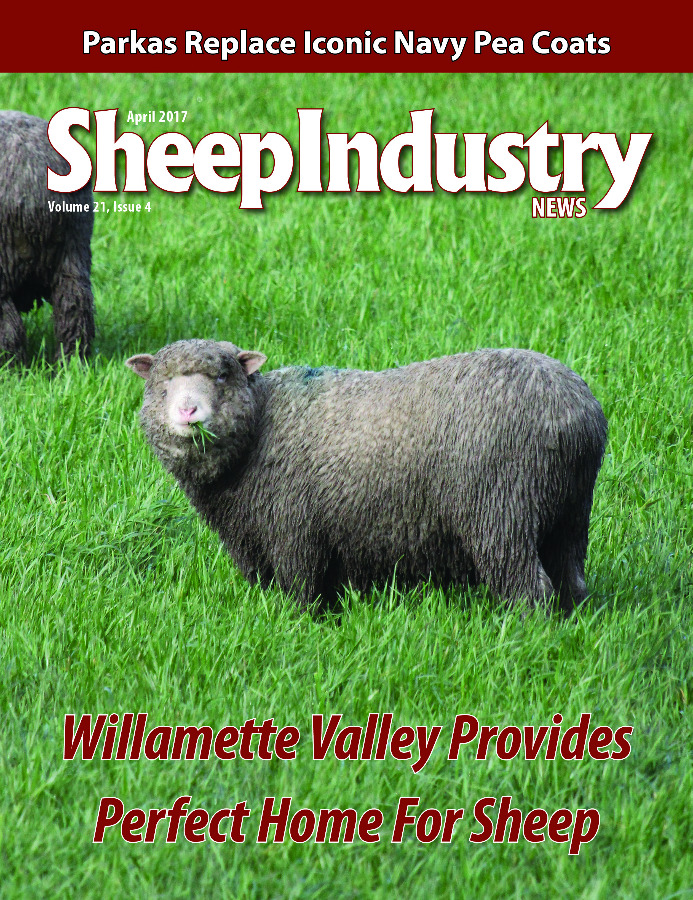Learning to Lead
NLFA Leadership School Offers Lessons from Oregon’s Grass-Fed Lamb
KYLE PARTAIN
Sheep Industry News Editor
The group tromping through the mud and steady drizzle is undeterred. They’re headed for greener pastures – literally – anxious to see first-hand the reason that Oregon’s Willamette Valley produces some of the best grass-fed lamb this side of heaven. The valley is known to most as the Grass Seed Capital of the World, which accounts for the lush green pastures that soak in the area’s constant spring rains and produce sheep forage beyond compare.
 Students of the National Lamb Feeders Association’s Howard Wyman Sheep Industry Leadership School are greeted by sheep at every turn. The wooly animals seem to populate every open field as the tour bus loops its way through much of the valley between Salem and Eugene.
Students of the National Lamb Feeders Association’s Howard Wyman Sheep Industry Leadership School are greeted by sheep at every turn. The wooly animals seem to populate every open field as the tour bus loops its way through much of the valley between Salem and Eugene.
Organized by Oregon Sheep Growers Association President Tom Nichols, the leadership school offered 30-plus students a closer look at how the western half of the state feeds sheep. The animals play a vital role in the valley’s grass seed production, contributing to soil health in an organic fashion.
Students came from all across the United States (joined by one Canadian) to witness a production style that in many cases is very different from the way they raise sheep back home.
“The forage-based system that we use is a very valuable resource in Oregon,” Nichols said. “As sheep producers, we’re able to utilize that to produce grass-fed lamb. We don’t feed grain in the Willamette Valley, so that makes our system very different from what a lot of people in the sheep industry are used to seeing. We’ve got some very special people in this area who raise lamb as custom feeders for producers from all across the west.”
A panel discussion on the school’s first day offered some insights into the process. Producers such as Forrest Arthur of Idaho and NLFA President Bob Harlan of Wyoming talked about the relationship they have with custom feeders in the valley.
“We have to work together,” Arthur said. “We have to balance what’s best for the grass and the sheep. I’ve worked with some of these guys for years, so I know that when I have a load of sheep to send up here, they will find a place to put them.”
Because the grass serves as more than just sheep feed, pasture rotation is critical. Fields are constantly monitored and sheep might need to be moved on short notice to protect the valley’s most well-known crop (grass seed). Thus, moving sheep is a regular occurrence in the valley.
One of those custom feeders is Oregon’s Cody Wood. He wowed the crowd with an auto drafter that automatically sorted sheep based on weight, but it was the surrounding pasture that students couldn’t stop talking about.
“The alternative forages he was growing with the plantain and the chicory, those are things that I can definitely take back to North Carolina,” said Katahdin producer Andrew Finch. “I can apply that directly to the farm I’m expanding into back home.”
Ohio State University student and lifelong sheep producer Brady Campbell raved about the pasture, as well.
“These guys are forage experts, and they’re using sheep as a complement,” he said. “I like the integration of the forbs. They’re getting some great growth from that.”
While many of the students can’t relate directly to the grass situation in Oregon, they certainly can understand the problems producer Reed Anderson ran into when trying to get his lamb slaughtered.
USDA-inspected facilities were few and far between in the area, which led Anderson to build Kalapooia Valley Grass Fed Processing. The plant processes between 400 and 500 lambs a week – about half of which come from the family’s Anderson Ranches.
“This was a major investment for our family,” said Anderson, who serves on the executive boards of both ASI and NLFA. “But we got to a point where this was a necessary step if we were going to stay in the sheep business.”
 Students toured the plant, which also processes cattle, and witnessed first-hand how the operation benefits small producers within the area. The USDA-inspected facility sells lamb and beef mostly into the food service industry.
Students toured the plant, which also processes cattle, and witnessed first-hand how the operation benefits small producers within the area. The USDA-inspected facility sells lamb and beef mostly into the food service industry.
Other stops on the tour included: lambing and shearing at Wahl Livestock; farming equipment with George Miller; tours of grass-seed processing facilities; a mill and yarn shop; an upstart sheep dairy; and Hubbard Hampshires.
“The school really has me excited to get home and get to work,” said Finch, who serves as vice president of the North Carolina Sheep Producers Association. He sells directly to the ethnic market and is looking to purchase a new property to support a larger flock. “After two days here, I’m thinking about some ways in which I can make my operation more efficient. This was a great opportunity to see the different ways that producers here are handling the day-to-day work of raising sheep.”
Colorado’s Blake Bell enjoyed his time in the Pacific Northwest so much that he’s making plans to move there – seriously. After two days in Oregon, he was joining his wife in looking at potential properties. Obviously, those plans were already in the works before he arrived for the leadership school.
“My money and time was very well spent here,” he said, acknowledging that he might benefit from the introduction to Oregon agriculture as much as anyone in the group. “I feel like I have a lot of hope after these two days. I see a lot of potential and opportunity here.”
The lifelong rancher raises sheep, pigs, chickens and turkeys on his Colorado ranch while also managing a grass-fed beef operation on the eastern plains of Colorado.
“I grew up on a farm and my dad always had two jobs, so it’s all I know,” he said. “But my most important crop is my kids (ages 4, 2 and a third on the way). I hope to be working full-time for myself in the next year so I can devote more time to them, and sheep will be a big part of that.”
One of five Oregon producers in the class, Katie Forrest lives just minutes from many of the operations included in the tour. She gave up her flock when she headed off to college and later got married and started a family. But she’s begun assembling a new farm flock in the past year.
“We had seen all the sheep in the valley and kind of wondered about it,” said Forrest, who grew up in southern Oregon. “This was such a great opportunity for me. I learned a lot about what I want to do with my sheep, and some things that definitely aren’t for me.”


